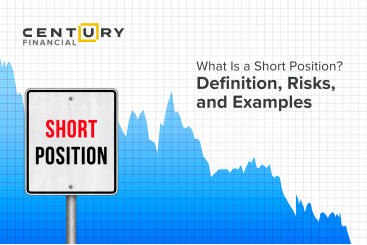Monday, November 11, 2024
How to Look for Sectors with Little to No Correlation ?
By Century Financial in 'Blog'

.jpg)
When building a strong investment portfolio, diversification is the key. But not all diversification is effective. To truly diversify, you need to identify sectors with low or no correlation.
In this guide, we’ll explain how you can find these sectors and use them to build a more resilient portfolio.
Why is Sector Correlation Important?
Correlation measures how two assets move in relation to each other. It ranges between -1 and +1:



When different sectors exhibit low or no correlation, market downturns in one sector may not significantly affect others. This helps reduce risk and smooth returns over time to avoid volatility.
1
Choose a Few Key Sectors to Compare
Start with sectors like:





These sectors have distinct drivers and are less likely to move in sync with one another.
2
Use Free Tools to Compare Sector Performance
Retail investors can easily access free platforms to compare correlations:



3
Download Sector Data & Calculate Correlation in Excel or Google Sheets
- Download historical prices of sector ETFs (like XLK, XLE, XLU) from Yahoo Finance or Google Finance.
- Use the CORREL function in Excel/Sheets to measure the correlation between two sectors:
- =CORREL(B3:B8,C3:C8)
Look for pairs with correlation close to 0 or negative values, as they indicate little or no correlation.
.png)
4
Look for Macro Drivers That Impact Sectors Differently
Different sectors respond uniquely to macroeconomic factors:



Investing across sectors with varied macro drivers can reduce the impact of any single economic event on your portfolio.
5
Consider Sector-Specific ETFs for Easy Diversification
If picking individual stocks feels overwhelming, sector ETFs offer an easy way to diversify across industries. Here are a few examples:




All these funds are available on the Century Trader Platform. Adding ETFs from uncorrelated sectors ensures a well-balanced portfolio.
How to Use Correlation Data for Better Investing Decisions?



Example of Low-Correlation Sectors


These pairs offer natural diversification, helping investors reduce risk during market fluctuations.
The Bottom Line
Finding sectors with low or no correlation is an effective strategy to reduce risk and ensure more stable returns. As a retail investor, you don’t need expensive software to do this—free tools like Yahoo Finance, Trading View, and Excel are enough to help you analyze correlations.
By strategically investing in uncorrelated sectors, you can build a resilient portfolio that weathers market downturns and captures growth opportunities. Start analyzing sectors today to maximize returns while minimizing risk.
The content in this blog, including any research, analysis, opinions, forecasts, or other information (collectively, "Information"), is provided by Century Financial Consultancy LLC (CFC) for marketing, educational, and general informational purposes only. It should not be construed as investment advice, a recommendation, or a solicitation to buy or sell any financial instruments.
This Information may also be published across various channels, including CFC’s website, third-party platforms, newsletters, marketing materials, emails, social media, messaging apps, webinars, and other communications. While CFC strives for accuracy, we do not guarantee the completeness, reliability, or timeliness of any content. Any decisions made based on this Information are at your own risk. CFC accepts no liability for any loss or damage arising from its use.
Trading financial products involves significant risk and may not be suitable for all investors. Please ensure you fully understand the risks and seek independent professional advice if necessary.
Please refer to the full risk disclosure mentioned on our website.


__1439480927.jpg)

__310747107.jpg)




.png)
.png)
.png)
.png)


